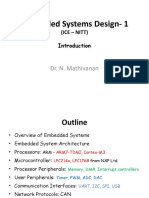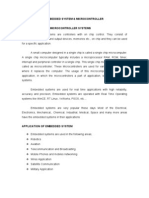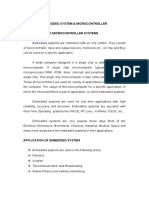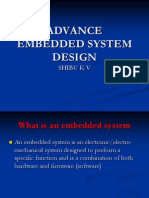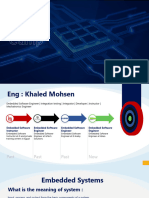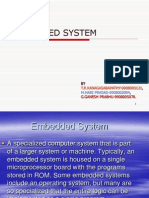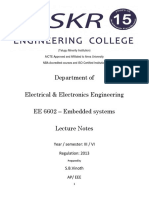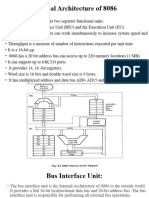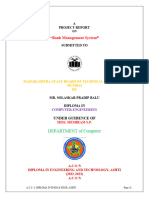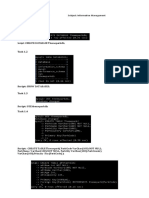0% found this document useful (0 votes)
116 views36 pagesModified New Embedded Systems
Embedded systems combine hardware and software to control specific applications. They are components of larger systems expected to function with minimal human intervention in real time. Embedded systems use microprocessors, microcontrollers, programming languages like C and assembly, bus standards, printed circuit board design, real-time operating systems, networking, and device drivers as building blocks. They are widely used in industrial applications like automation, transportation, and medical equipment.
Uploaded by
Priya KosuriCopyright
© Attribution Non-Commercial (BY-NC)
We take content rights seriously. If you suspect this is your content, claim it here.
Available Formats
Download as PPT, PDF, TXT or read online on Scribd
0% found this document useful (0 votes)
116 views36 pagesModified New Embedded Systems
Embedded systems combine hardware and software to control specific applications. They are components of larger systems expected to function with minimal human intervention in real time. Embedded systems use microprocessors, microcontrollers, programming languages like C and assembly, bus standards, printed circuit board design, real-time operating systems, networking, and device drivers as building blocks. They are widely used in industrial applications like automation, transportation, and medical equipment.
Uploaded by
Priya KosuriCopyright
© Attribution Non-Commercial (BY-NC)
We take content rights seriously. If you suspect this is your content, claim it here.
Available Formats
Download as PPT, PDF, TXT or read online on Scribd
/ 36

